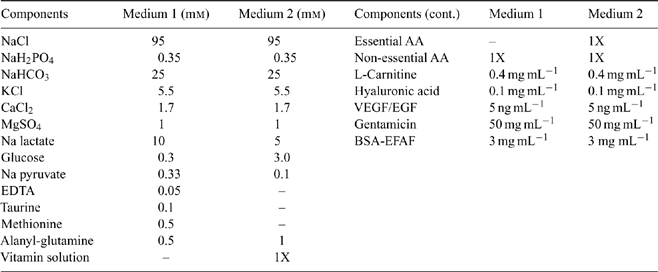282 NOVEL SEQUENTIAL MEDIA FOR THE PRODUCTION OF CENTRAL AMERICAS FIRST IN VITRO-PRODUCED SENEHOL CALVES
P. Koyner A , J. E. Pino A , M. Lasso A and F. Rodriguez CA University of Panama, Panama City, Panama;
B Animal Reproduction and Genetic Research Center, David, Panama;
C Oteima Technological University, David, Panama
Reproduction, Fertility and Development 22(1) 297-298 https://doi.org/10.1071/RDv22n1Ab282
Published: 8 December 2009
Abstract
Panama, like many countries in Central America, has a tropical climate with high temperature and humidity throughout the year. These conditions negatively affect the fertility and productivity of dairy cattle; therefore, it is necessary to develop and apply technologies to improve those parameters in heat-stressed cattle. One such technology is in vitro embryo production (IVP). The objectives of this study were to a) introduce, for the first time in Panama, IVP procedures for bovine embryos and b) evaluate the efficacy of novel sequential media (SM) on in vitro embryo development and pregnancy rates. Oocytes collected from slaughterhouse ovaries of Holstein cows were matured and fertilized (with Senepol semen) in vitro using standard procedures. The resultant zygotes were cultured in an atmosphere of 6% CO2, 5% O2, and 89% N2 at 38.5°C in either control medium plus BSA (3 mg mL-1; mSOF, Tanaka et al. 1996 JICA Manual) for 144 h post-insemination (hpi; n = 1,072) or a semi-defined medium for 96 hpi followed by a second semi-defined medium for 48 h additional culture (n = 1,081; see Table 1). The experiment was replicated 5 times between January 2007 and May 2009, and data were analyzed using chi-square. Zygotes cultured in SM resulted in more >4-cell embryos at 48 hpi than controls (93 v. 81%; P < 0.01), more >8-cell embryos at 96 hpi than controls (79 v. 65%; P < 0.01), and more blastocysts at 144 hpi than controls (45 v. 37%; P < 0.05). A subset of quality grade 1 blastocysts produced in SM (n = 35) or mSOF (n = 30) were transferred nonsurgically to synchronized recipients. Pregnancy rates at 60 days were similar between SM and mSOF embryos (62 v. 45%, respectively). From the first 14 embryo transfers, 7 calves have been born (4 from SM and 3 from mSOF). These results demonstrate that the SM used in this study, which contained antioxidants and growth factors, supported enhanced in vitro embryo development. Additional transfers are needed to determine if the use of SM will also result in a statistically higher pregnancy rate, which would be economically important from a commercial point of view. This represents the first report of IVP calves in Central America.

|


